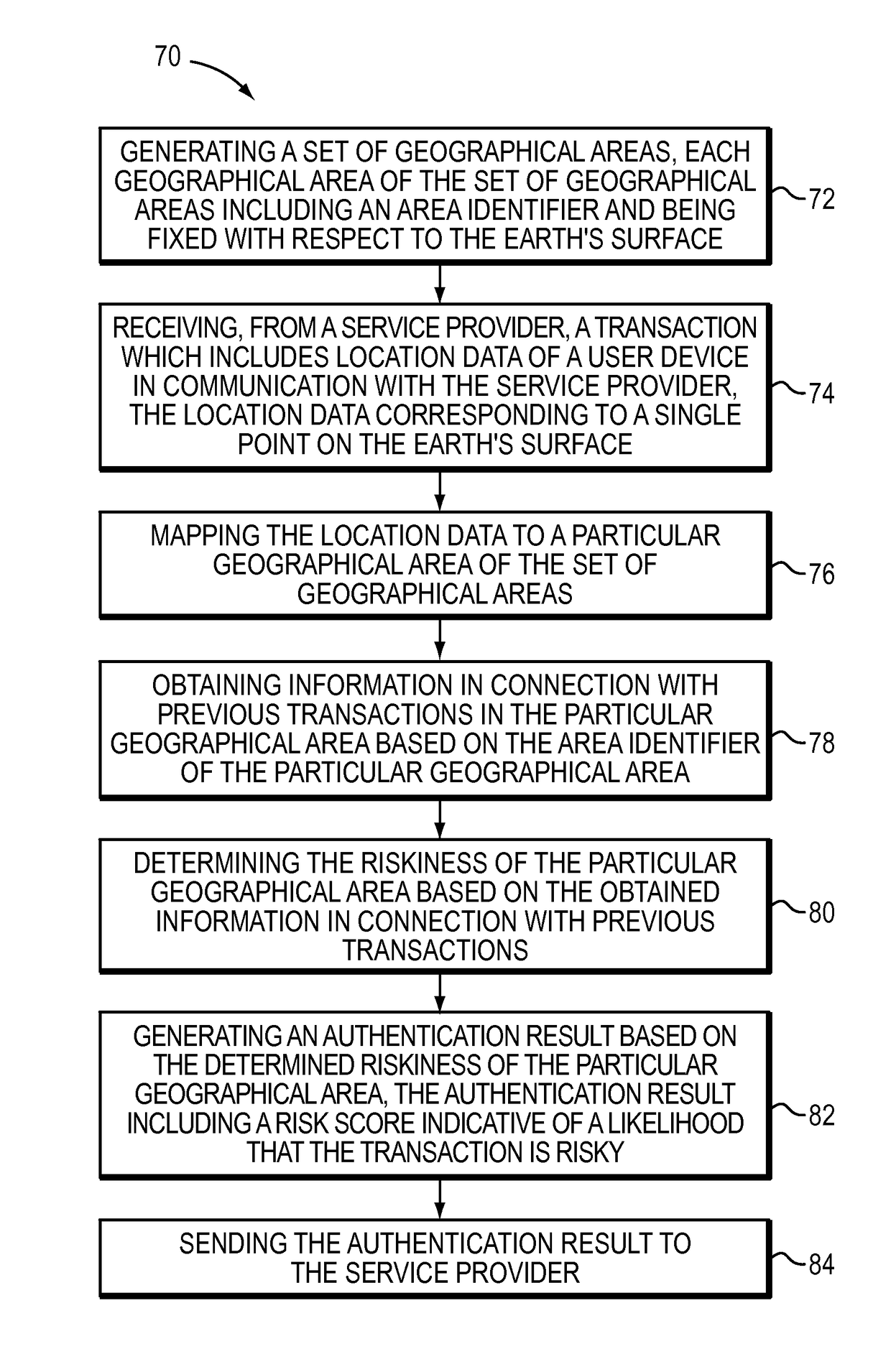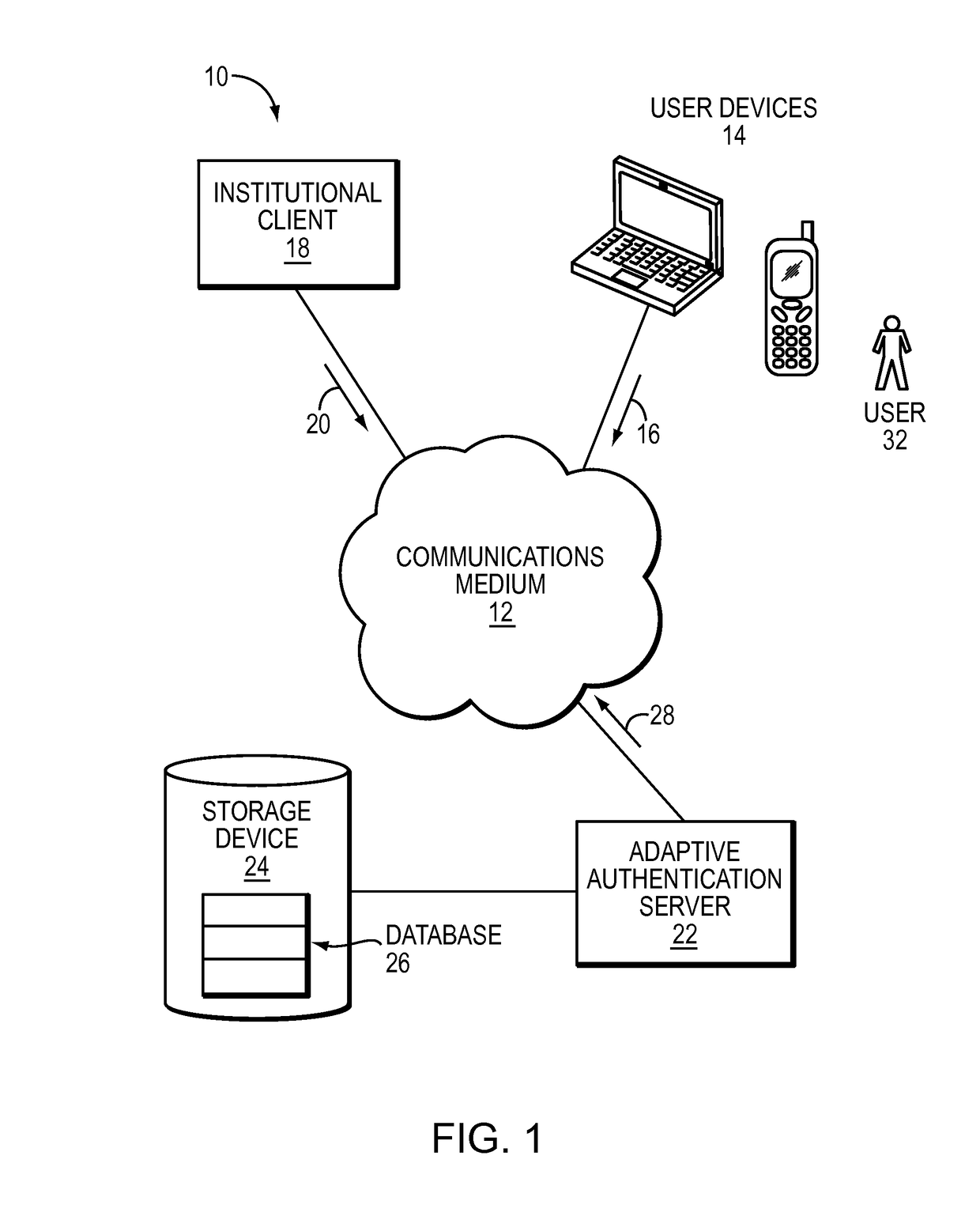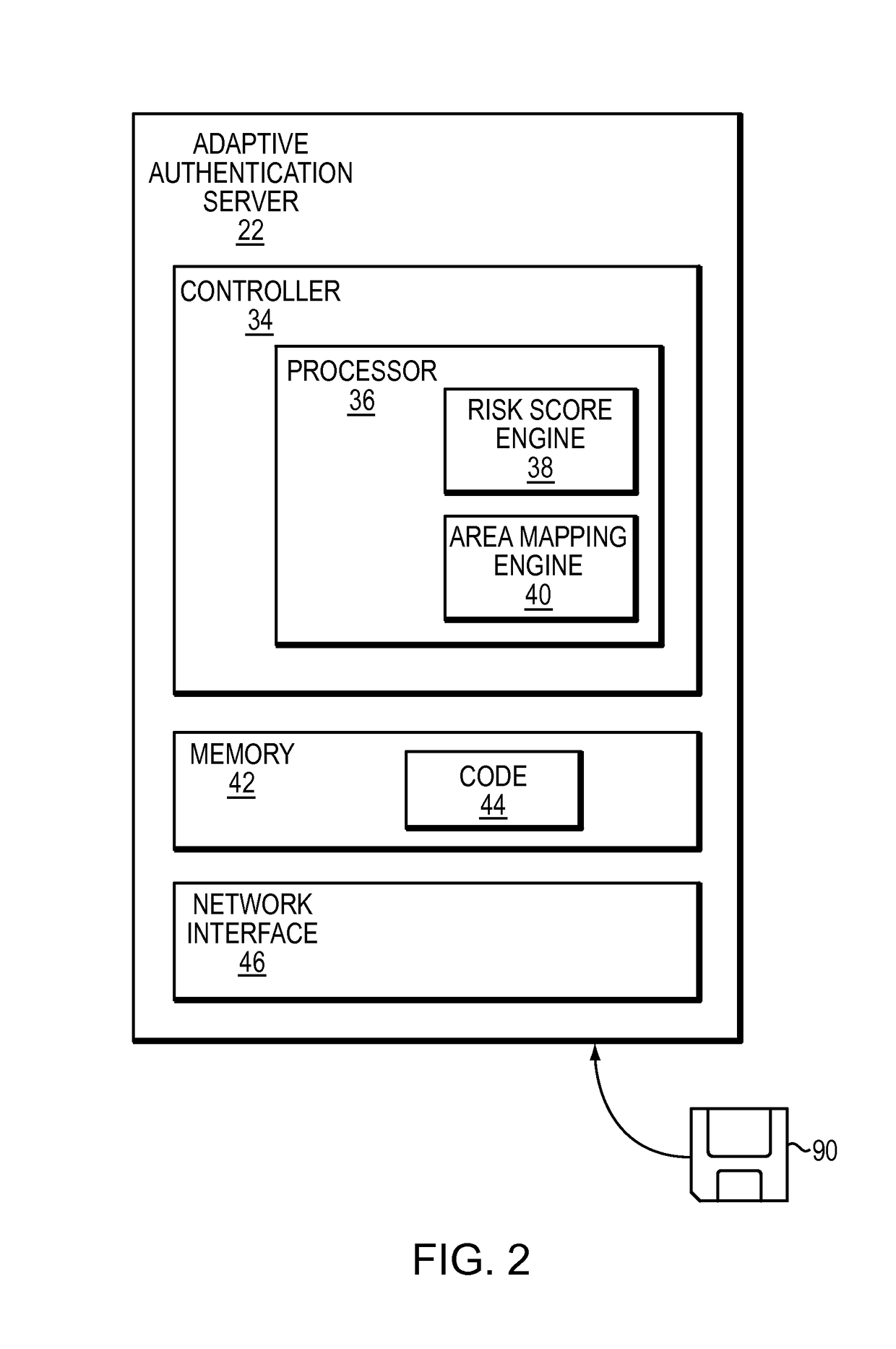Identifying risky transactions
- Summary
- Abstract
- Description
- Claims
- Application Information
AI Technical Summary
Benefits of technology
Problems solved by technology
Method used
Image
Examples
Embodiment Construction
[0020]The technique described below identifies risky transactions by mapping raw user location data to a particular cell in a fixed grid. Along these lines, when a user initiates a transaction with a service provider over a mobile device, the service provider collects raw location data such as a latitude and longitude for the user and transmits the location data to an adaptive authentication server. The adaptive authentication server then accesses a fixed set of geographical areas overlaid on a map of the Earth. For example, the geographic areas can correspond to square cells whose corners are defined by selected latitudes and longitudes. The adaptive authentication server finds a particular geographical area which contains the latitude and longitude for the user. The adaptive authentication server then obtains information in connection with previous transactions in the particular geographical area using the identifier of the particular geographical area to obtain the information. B...
PUM
 Login to view more
Login to view more Abstract
Description
Claims
Application Information
 Login to view more
Login to view more - R&D Engineer
- R&D Manager
- IP Professional
- Industry Leading Data Capabilities
- Powerful AI technology
- Patent DNA Extraction
Browse by: Latest US Patents, China's latest patents, Technical Efficacy Thesaurus, Application Domain, Technology Topic.
© 2024 PatSnap. All rights reserved.Legal|Privacy policy|Modern Slavery Act Transparency Statement|Sitemap



